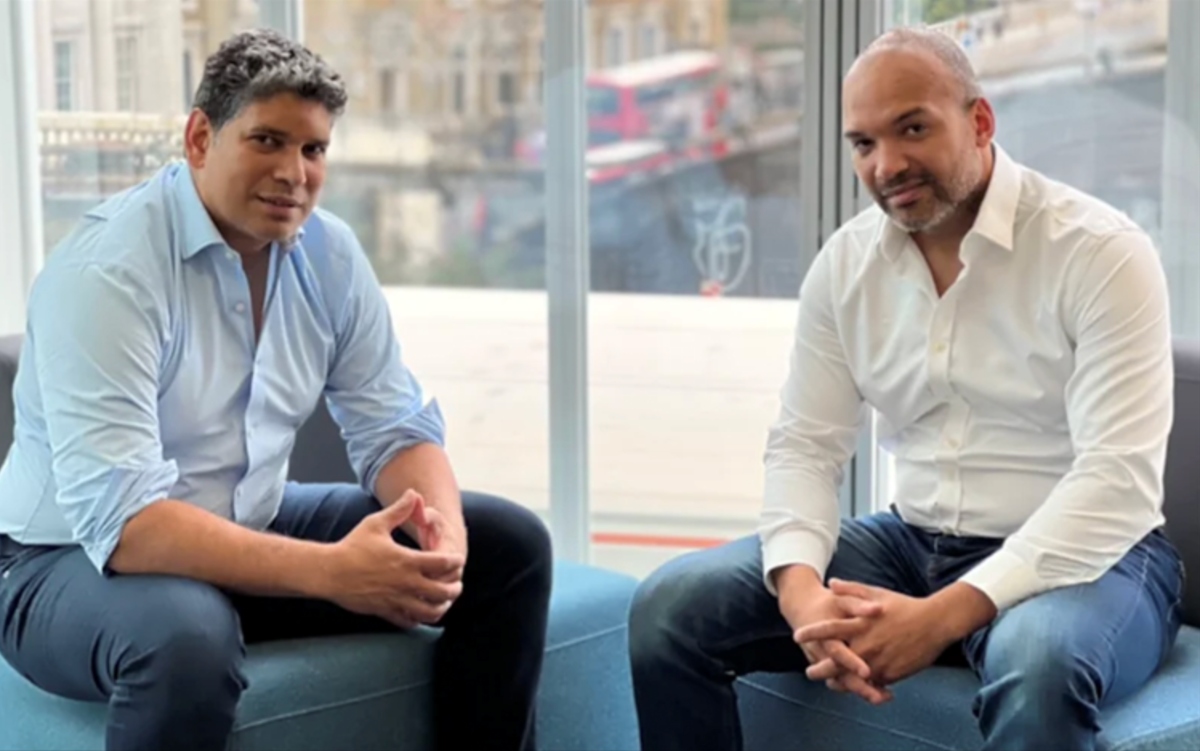
ICOs: The Devil is in the Details
In this article, I want to explore certain nuances of ICOs. For the uninitiated, the acronym ICO stands for Initial Coin Offerings. They are also sometimes known as Token Generating Events (TGEs), and in some instances, also referred to as WTFLOL. If I have to be honest, with the amounts being raised, and the business models being funded, WTFLOL describes almost everything happening in this space.
If you think that is an hyperbole, just add the word ‘blockchain’ or ‘cryptocurrency investor’ to your Linkedin profile, and wait for the offers to roll in.
Here are some mind blowing stats of recent ICOs:
Blockchain Capital raised $10 million in 6 hours. Bancor raised $152 million in 3 hours. Golem raised $8.6 million in 29 minutes. Aragon raised $25 million in 15 minutes. Modum.io raised $4.2 million in 10 minutes.
That is a ridiculous amount of money raised very quickly!
Things to Watch out For:
There are essentially three aspects about ICOs worth thinking hard about:
What exactly do you receive in an ICO?The big point here is — what exactly are you buying? Is it a mechanism to transfer value? Is it a paid right to use a particular platform plus a mechanism to transfer value? Or is it something else entirely?
What is the alignment of incentives for founders, employees and investors?How quickly do the promoters ‘earn’ the money raised from the ICO? What are the lock-in periods and vesting schedules? Are there any performance based metrics in place for new rounds?
Why do some companies raise VC funding and do a token offering?Are such companies more likely to build what they promise? As a token investor, where do you stand , given that the ‘true’ investors are the VCs, while you only hold a token which the company claims will be (more) valuable in the future?
1) What Exactly Do You Get When You Buy an ICO?
The reason I say that ICOs are unlike anything you have seen before is that there is relatively little uniformity in what investors receive. In an IPO on the other hand, a share of the company is what you get, and everybody understands the implications of buying a share.
When you buy a share, you are entitled to the following:
- Dividend income from profits that the company earns in the future
- Gains in the price of the shares
- Voting rights at shareholder meetings
All shares have the features listed above — there is never any doubt about this.
In the case of a token, things aren’t as clear cut. Bitcoin, which is definitely the world’s most famous crypto, is mostly used for transfers of value. The same with XRP, which is the token used on the Ripple network.
What about Ether? Ether is the token used on the Ethereum platform. Ether can be used to transfer value (just like Bitcoin or XRP), but it has certain other uses too . As a developer, if I want to build something on the Ethereum platform, everything I do on the platform is paid for using the Ether token. I can’t pay for this with Bitcoin or XRP. So one can see that while Bitcoin and XRP are single purpose, Ether has multiple uses. The Ether token will gain value if more developers build things on the Ethereum platform, and if users use these applications.
In a sense, Bitcoin is a direct investment into a superior payments technology. If the world does indeed start using Bitcoin for transactions, and Bitcoin does indeed begin to scale better, then Bitcoin will continue to grow in value.
If you are not a developer or a user, an investment in Ether can be thought of as a back door investment into the Ethereum platform. If Ethereum becomes the platform of choice for deploying blockchain applications, then the demand for Ether will grow. One can therefore expect the price of Ether to rise proportionately.
Some tokens are used to access the features of a platform. Augur is a prediction markets platform which allows users to bet on outcomes using the REP (reputation) token. In this instance, the platform allows users to bet on outcomes using the REP token, and so the token can be thought of as chips in a casino — if you want to bet, you need to use REP. The use case is pretty clear, and almost everyone is clear on how the REP token is expected to be used. (Note: Augur is not an online casino — it is a prediction market, although the two might attract users whose mindset is similar)
To conclude, Bitcoin, Ether, XRP and REP are all tokens — but are all so radically different. Some provide voting rights, while others don’t. Some allow developers to build applications, while others don’t. Some enable access to a platform, while others only offer a mechanism to transfer value.
In some extreme cases, in an effort to be on the right side of the law, a whitepaper might describe its token in terminology which is completely wacky. Tezos for example referred to its token (Tezzies) as a non-refundable donation. That is just ridiculous. Thousands of people from around the world over-subscribed to the Tezos ICO. All so they could ‘donate’ to the Tezos Foundation?! Ofcourse, Tezzies come with voting rights, so calling it a ‘non-refundable donation’ is clearly an attempt to reduce the chance that Tezzies are considered securities.
Hopefully, the arguments above are reminders that it is imperative you understand what you are going to receive before you put money into an ICO.
2) Alignment of Interests, Motivations and Risks
ICOs are the reverse of IPOs as far as investment logic is concerned.
A company which IPOs has demonstrated a solid track record of cash flow and profit. It has probably gone through multiple rounds of funding before the all important ‘exit’.
ICOs are the start of a company’s operations. In many cases, a company doing an ICO has not even built the first version of their product. So when you buy an ICO, you are basically providing initial capital to a company — and usually, given we are talking about blockchain, it is for a product which is yet to demonstrate its usefulness at scale.
Furthermore, most ICOs raise millions at a single time. As an investor, what you are doing is telling the company the following:
‘Here you go, on the basis of this beautiful 5 page whitepaper you have published, I trust you a lot, and believe without any doubt that you will build this platform in the time period you state. The problem you are solving is unclear to me, and there is a lot of regulatory indecisiveness at this point in time, but to hell with that. Here — please take $15 million. Do as you wish. I am rooting for you.’What do you think happens immediately after an ICO?
Well, the ‘founders’ get to keep a chunk of the money raised. Obviously. This is called ‘founders reward’.
Which comes to the next big issue with ICOs — vesting. Most ICOs have very short periods during which tokens vest i.e. time during which the tokens are ‘earned’ by founders and employees. The time taken for tokens to vest after ICOs is too short compared to the time it takes to build a project on the blockchain and get it to a point of mass adoption.
For example, in a vesting period of 3 years, with every month that passes, the employee earns 1/36 of his allocation of shares. At the end of 18 months, he will have earned half the shares. At the end of 36 months, he will have all the shares to his name.
Some ICOs have a vesting schedule which starts 6 months after the raise, and finishes as early as 2 years after the raise.
Some ICOs don’t have a vesting schedule.
However, there is usually also a lock-in period, which is a period of time during which they are unable to sell their tokens on the open market after they have earned them. In the case of ICOs, lock-in periods are quite short — ranging from 3 months to 18 months. This is too short in my opinion.
There is little uniformity across ICOs. Some ICOs have only vesting periods, some have vesting plus a lock-in (good, depending on how long this is) and some only have a lock-in. So many sure you study each ICO thoroughly before you invest — vesting and lock-in periods give clues about the seriousness of the project!
One option to better marry the interests of investors and the company is that instead of one big, humongous raise at the start, the ICO is followed by subsequent coin offerings, leading to better alignment of interest between the founders and investors. This is what Blocksquare has done. The exact split to be raised at each stage is determined by the company, but it is essentially the same as a seed round (30% of total supply), Series A (30% of token supply), Series B (20% of total supply) and so on. This ensures that founders hold onto their shares longer, since the supply of the token is introduced in a staggered fashion. It also allows future investors to assess that the project is meeting its targets, and only then invest.
Another big problem with ICOs is that the tokens are often available for trading very soon after the ICO. This obviously causes huge price spikes and drops (volatility!) as ICO flippers work their magic. They make a short term buck, but this does nothing to augment faith in the long term value of the project. Going forward, we will probably see many tokens that don’t recover after the first price slump following the ICO. This raises the risk of investing in an ICO, if you are a long term investor.
In conclusion, if you do invest in ICOs and intend to hodl, it is worth studying the vesting schedules and lock-in periods thoroughly, since there are likely to be (massive) drops in price the moment the vesting and lock-in periods are over, as founders and employees cash in on their bounty. Short vesting periods also signal a mentality of founders wanting to make a quick buck, as opposed to being invested in a project for the long haul.
Given the number of ICOs in 2016, 2017 and 2018 one can only imagine the state of the market in 2019, 2020 and 2021, when all these ICOs will be fully vested and out of their lock in periods!
All this sounds pretty scary, doesn’t it?
3) Why do some companies raise VC funding AND do a token offering?
Now let’s talk about ICOs by companies that are also funded by venture capital, and the signaling inherent in such arrangements.
So let’s talk about Ripple again!
Ripple has raised multiple rounds of venture financing, to the tune of around $90 million to date. It has also issued a token called XRP, which has become one of the world’s largest cryptocurrencies by market capitalization.
It is not uncommon to see many blockchain companies being funded via a token sale and venture capital.
ICOs have allowed early stage companies to raise enormous amounts of capital. In fact, some VCs are of the opinion that ICOs have become the preferred funding route of many entrepreneurs. However, it is important to ask why a company goes down the ICO route, and particularly when it raises money from both VCs and via an ICO.
Many companies which were unable to raise money from VCs have done so via an ICO. All that they have done is to add an element into their business model where the token issued has an ongoing role to play. Whether this role will lead to an increase in price or not depends on many factors, and is not the subject of this post.
In the case of Ripple, the company makes money (in fiat currency mainly) since its clients (mainly banks and payment companies) pay to use its platforms. VCs, by holding preferred equity, will benefit since this cash flow will accrue to them in the form of increased valuations, dividends or ideally both. Individuals like you and me, who hold the XRP token do not benefit at all from the cash flow to Ripple Labs. The only way that we benefit is if the XRP token is used by all of Ripple’s customers, which will lead to increased demand in the long run, and thereby benefit XRP token holders.
Now let’s look at another way in which VCs get involved with blockchain companies. Tim Draper, a very successful VC, invested over a million dollars into Dynamic Ledger Solutions (DLS), the company that is developing the Tezos platform. However, the Tezos token sale was conduced by the Tezos Foundation, which is a foundation set up in Switzerand. The foundation has the power to decide how funds raised in the ICO will be used.
So there are 2 entities involved in the creation of Tezos:
- DLS, which is building the Tezos platform, and was set up by Arthur and Kathleen Breitman, the founders. Tim Draper invested his money in this company.
- Tezos Foundation, which received the proceeds from the ICO and is responsible for deciding how the money is to be used, including how much to spend on development and other expenses. This is managed by a board comprised of 3 members.
At the time of the ICO, few investors knew of a contract between DLS and Tezos Foundation. The contract was a promise for the sale of DLS to the Foundation for 8.5% of the money raised in the ICO.
Given that Tezos raised $232 million, this amounted to close to $20 million at the time. The 3 DLS shareholders (Tim Draper, Arthur Brietman and Kathleen Brietman) would receive this payment immediately after the ICO. You can see how Tim Draper would have made many multiples of his money very quickly, had the deal gone through without problems. Tezos is now facing multiple class action lawsuits, but Tim Draper stands to gain handsomely from this deal, in a very short amount of time. The founders too make a lot of money very quickly, without any vesting and lock-in — they receive US Dollars and not a token subject to lock-ins and vesting.
The above is just one example of how a VC might try to profit from an equity investment. This also shows the misalignment of interests between investors and founders, since Arthur and Kathleen will receive their share of the sale of DLS shares to the foundation, in addition to their share of the ICO. This represents another source of risk in ICOs, since investors often don’t read the offer documents closely, and the structure of ICOs is usually more complicated than meets the eye.
In the case of such companies, which receive both VC and ICO money such as ZeroX, I view it as incredibly important for ICO investors to assess how VCs intend to gain a return on their investment, the time periods involved, and whether or not the VC also has preferential treatment as far as the token sale is concerned i.e. do they get to buy at a substantial discount?
If you assume that VCs have a knowledge and informational advantage in this space, which is a belief I hold, then I would conclude that companies which have done a token sale and have also raised VC investment offer positive signals to individuals who hold tokens. But one needs to ensure that there is long term alignment of interest between the VC, the company (the founders) and the token holders. Where the token holders are those who are going to be actively involved with the platform as developers or users (which is the case with Ethereum, NEO and Stellar), it offers the lowest risk to individual investors since there are various parties which will keep the company honest. The KEY caveat is that the interests of all these parties have to be well aligned. And that is something that has to be researched on a case by case basis.
It is interesting to note that very many companies in the space have chosen not to do an ICO. Some companies, Chain being one, have only raised funds from VC investors, and these companies usually offer blockchain solutions to enterprises in a range of sectors. Blockchain Capital is an investor in this space, and their website has a list of their investments, most of which have chosen not to do a token sale.
To sum up:
- Make sure you understand what you are buying, and the circumstances under which you will gain from the investment.
- Make sure you do thorough research on whether the founders and employees are incentivized to work on the project for a length of time — they should not be able to dump their tokens soon after the ICO and then disappear.
- Some companies that tried getting VC funding and failed have now done an ICO. Some companies have done both an ICO and are VC backed. Some have chosen to avoid a token sale and are only relying on VC funding. It is important to understand why.
Trending
-
1 Building a Strong Financial Foundation: Saving, Investing, and Retirement Planning
Daniel Hall -
2 Franchise Investment Pitfalls to Avoid: A Beginner's Checklist
Daniel Hall -
3 Why Selling to an iBuyer Could Be the Best Move for Your Home
Daniel Hall -
4 Financial Tips for Businesses: Reducing Expenses Without Sacrificing Quality
Daniel Hall -
5 9 Tips to Help You Secure a Graduate Job in Finance
Daniel Hall





Comments